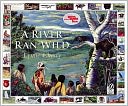Canyons
Author: Gary Paulsen
Page Length: 184
Reading Level: 6
Genre: Historical Fiction
PLOT SUMMARY: This story is about two different boys who lived in different eras, but have a similar spiritual connection. Coyote Runs was a teen-age apache who died as he was coming of age on his first horse raid. Breenan Cole is a teen-age boy who lives with his divorced mother and loves to run in the city of El Paso.
While on a camping trip with his mom and her new boyfriend, Brennan discovers a human skull. He hides the skull and takes it home. There, he becomes obsessed with it and determined to find out what happened to the person who died from a bullet shot to the head. The spiritual connection is formed when Brennan begins to have dreams about an Apache boy who seems to be sending a message to him.
Coyote Runs was the young apache boy who was shot and killed by U. S. army soldiers during a night raid the tribe had made to steal horses from Mexico almost 100 years earlier.
Brennan confides his secret to his biology teacher who contacts a friend that has a link to obtaining historical documents. When Brennan discovers what happened to Coyote Runs, he leaves home to find the slain Indian’s body in the desert outside of El Paso.
REVIEW: The beginning of the book is written from the point of view of both boys in alternating chapters. After Coyote Runs dies, the rest of the book is written from Brennan’s point of view. The book would be a good read as a class novel because it would hold the interest of both boys and girls. It could easily be used with a social studies unit on a study of American Indians of the Southwest. The sill of compare/contrast as it relates to the two boys and their cultures could be studied, as well as the skills of setting and theme.
This is one of Paulsen’s better books and would appeal to most young adults.
TOUCHY AREAS-PAGES: None
AREAS OF TEACHING: Compare/Contrast, Sequence of Events, Setting, Point of View, Theme
RELATED BOOKS: The Birchbark House, Cloudwalker: Contemporary Native American Stories
RELATED WEBSITES:
www.webenglishteacher.com/paulsen.html
www.sdcoe.k12.ca.us/score/cy68.html
MUSIC CONNECTIONS: Warrior Spirit (1994), The Fast Runner (2007), Spirit Rider (1993)
REVIEWED BY: Shirley Wagner








